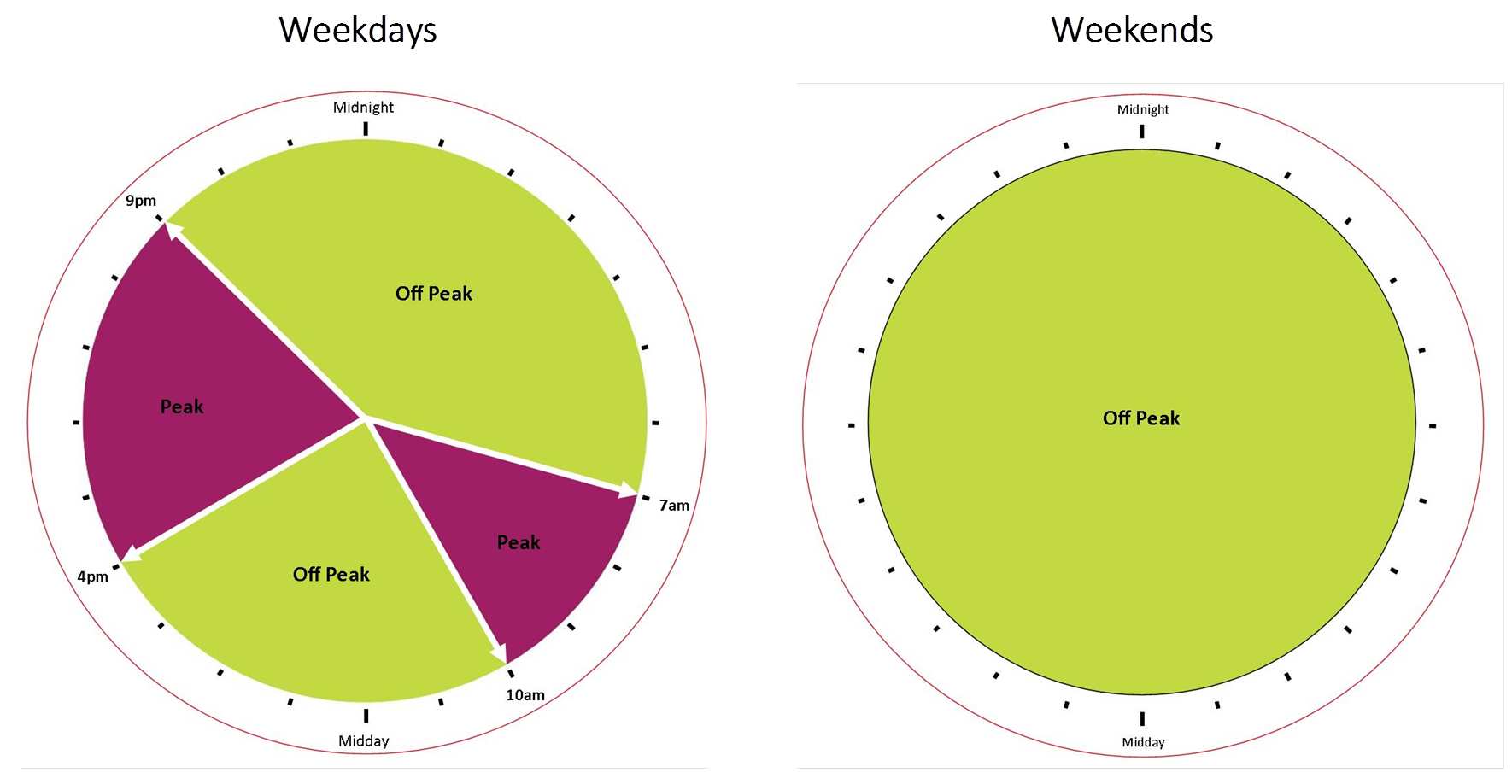Update 24 June 2020: Chart below now compares the various tariffs using the 2020-2021 prices.
Update 10 Jan 2017. Note that these tariffs are in AEST (ie do not follow daylight saving changes). See official Aurora page for details of these tariffs.
Aurora Energy introduced two new time-of-use tariffs, from 1 July 2016 on an opt-in basis. One for residential customers and one for small business customers.
The residential Tariff 93 has two prices: peak 7-10am and 4-9pm Monday to Friday, all other times including all weekend are off-peak. (see graphic below)
The small business Tariff 94 has three prices: peak 7am – 10pm Monday to Friday, shoulder 7am – 10pm weekend day, and off-peak any day 10pm – 7am.
TREA made a submission to the Economic Regulator supporting the introduction of this tariff on an opt-in basis. We believe that it will provide an incentive for the industry to offer new production and services and it will provide participating customers with an incentive to modify their consumption behaviour in ways in which both saves them money and reduces long term network costs.
Scenarios under which this tariff could be beneficial include:
- Customers who add a timer to their storage hot water service to avoid peak times.
- Customers who have the capacity to modify their behaviour to move consumption from peak to off-peak times.
- Customers who install battery storage with solar to store some of their surplus daytime generation for use in peak periods.
- Off peak charging of electric vehicles.
- Use of grid connected battery storage (including batteries in electric vehicles) to buy off-peak energy and store it for use in peak times.
- Customers who are able to pre-heat well-insulated houses in order to avoid or reduce the need for heating at peak times.
- There may be a case for new solar installations using this tariff to consist of east and west facing panels rather than north facing panels to increase solar generation at peak tariff times.
In all these scenarios, the decision by TasNetworks and Aurora to offer two relatively short peak periods in a day for residential customers, with an off-peak period between, makes time shifting of consumption much more viable than in other states which have a long day-time peak period.
Under all these scenarios, there is a benefit to the network and hence to all customers from a reduction in the network infrastructure necessary to meet peak demand.
All of these benefits are maximised if the difference between peak and off-peak rates provides sufficient incentive for customers to change their behaviour. For this reason we are pleased to see that the residential tariff involves a significant price difference between peak and off-peak.
Should you be promoting this to your customers?
This new tariff may be a benefit to your customers and provides an incentive for you to offer new services around solar, batteries, monitoring and home automation. However you will need to be reasonably confident that there is an overall benefit to customers before recommending this tariff. This is difficult to calculate without detailed data on a customer’s pattern of daily use. Aurora’s initial advice is that the time of use tariff is most likely to be beneficial to customers whose tariff 31 consumption (in kWh) is greater than their tariff 41/42 consumption.
Watch out for the potential downsides:
- The financial benefit of Solar PV without batteries will be reduced to the off peak rate between 10am and 4pm
- In calculating the benefits, be aware that over time it is TasNetworks intention to increase fixed charges and reduce consumption based charges, this will reduce the financial benefit of offsetting consumption with solar PV.
Does it solve the solar metering problem?
See our Solar Metering page for discussion of whether the time of use tariff is a satisfactory solution to the problem that solar owners on tariffs 31&41 face.
Comparison of 2020-2021 residential tariffs
| Tariff | Fixed charge / day | Peak /kWh | Off-peak /kWh |
| Tariff 93 time of use |
105.750c |
32.137c |
14.963c |
| Tariff 31 |
95.193c |
26.587c |
|
| Tariff 41 |
17.750c |
17.265c |
|
| 31+41 |
112.943c |
||

More information
For more information see the Sustainable Living Tasmania advice page “Which tariff should I use?“.
